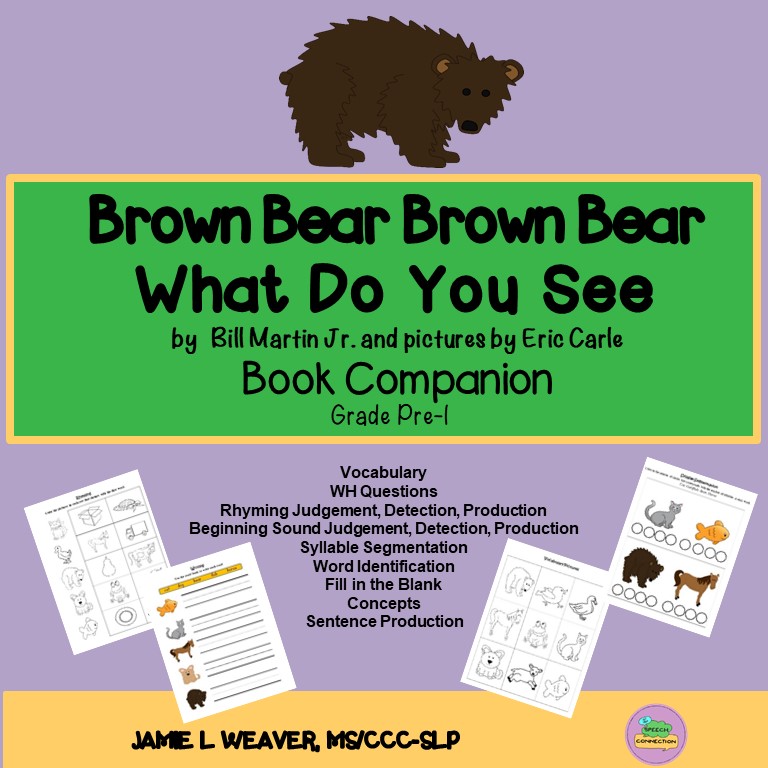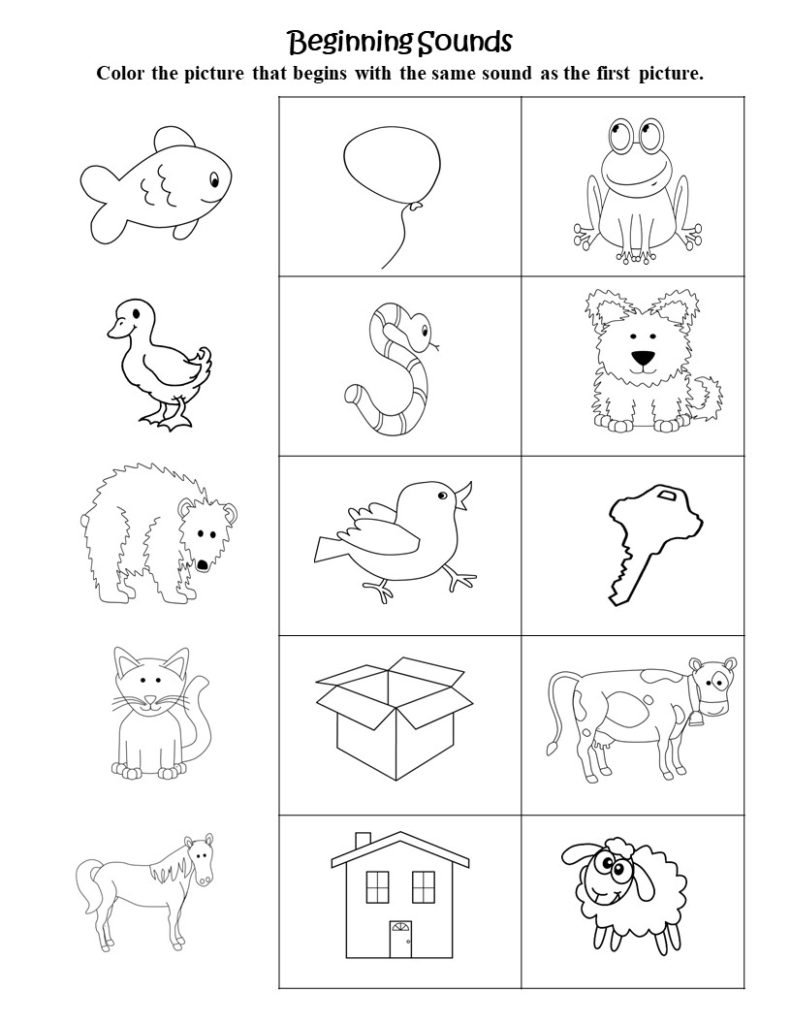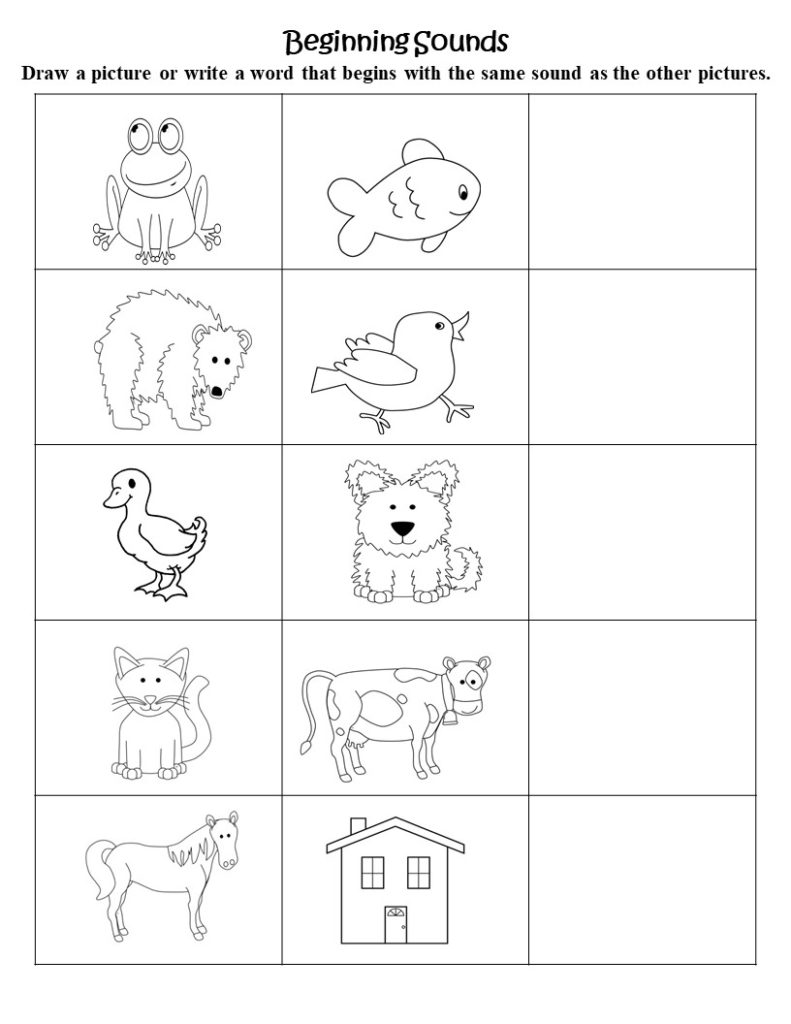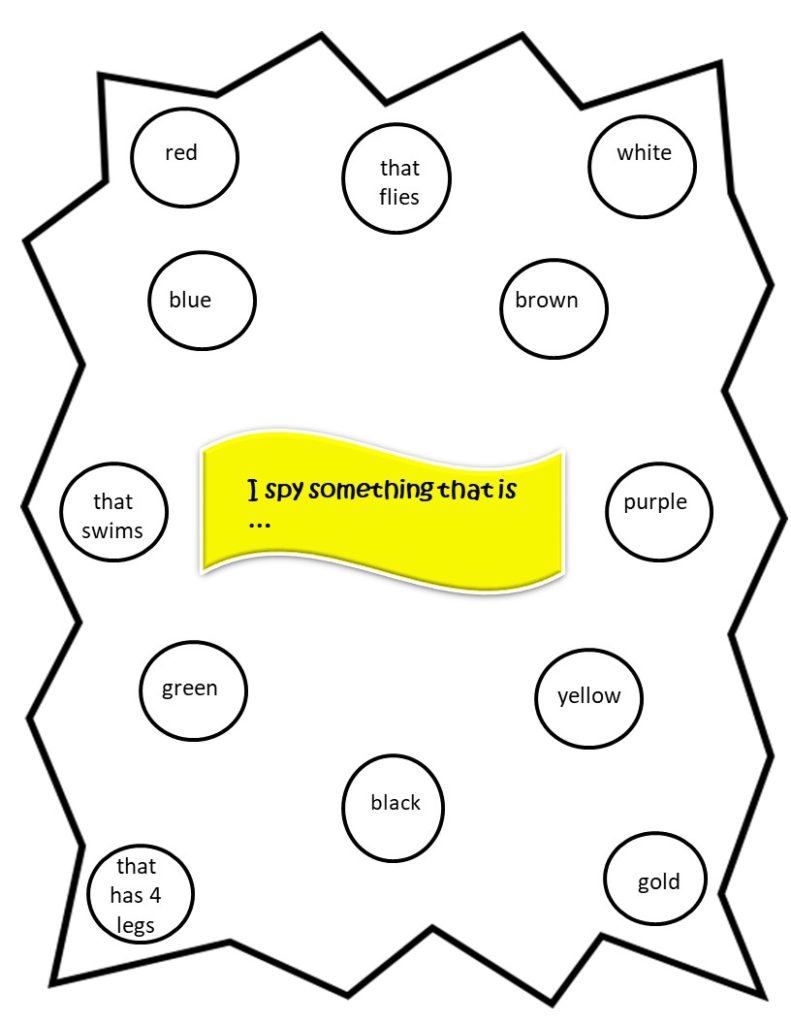
I love using storybooks and activities book companions with my primary students. Not only do they help foster a love for reading, but they can address numerous speech and language goals. I use them almost exclusively with my preschool and kindergarten population. One of my favorites to use is Brown Bear, Brown Bear What Do You See Activities Book Companion. Here is how I do it.
Pick a Book
Start with a great book! Anyone who works with young children knows the magic of a great book. There are so many great books published every day, but I tend to stick with the all-time favorites. I like to use books that the teachers are reading in their classrooms and commonly used in thematic units. Click here to see a list of great books and companions. Below is an example of how to use Brown Bear, Brown Bear, What Do You See with my activities book companion.
Before You Read: Introduce Vocabulary
Start by introducing the book. Discuss with the students, “What do you think the book is about?” Talk about the title, the author, the illustrator (it is never too early to begin teaching story elements). While discussing the book, point out the “words” in the title and the number of words. Before reading the book, discuss the basic vocabulary in the book. Introduce vocabulary using vocabulary picture cards. After you have introduced the book and the vocabulary, read the story. As you read, point out the vocabulary words and ask questions to check for comprehension. Include yes/no questions, WH questions, and inferencing questions.
Answering Questions and Vocabulary
When you have completed the story, use the WH questions cards to reinforce comprehension and understanding of WH questions. You can cut out the question cards and have the students pick a card for a fun way to practice. Have the students color the vocabulary picture cards following directions. This activity is a great way to teach concepts (color), following 2-step directions, and increasing their understanding of the vocabulary. Use the cards to identify by pointing, naming, identifying by attribute, or category. There are also vocabulary word cards that can be used to teach students reading. You may want to cut out the vocabulary words and have the students match them to the picture.
Phonemic Awareness and Phonological Skills
Use the book to develop early literacy skills of phonological awareness. Use the phonological awareness activities that target rhyming judgment, rhyming identification, rhyming production, beginning sound judgment, beginning sound identification, and beginning sound production. These activities use the vocabulary from the book. Expand on phonological awareness skills by having students match pictures to words, write the words, and fill in the missing letters.
Concepts and Sentences
Teach concepts using the book. A great way to do this is to play “I Spy.” Have students pick a circle and find a picture in the book that corresponds with the word in the circle. Once they find the picture, they can color in the circle, put a sticker or token on the circle or use dot paint to fill in the circle. Included in the book companion are activities to increase understanding of concepts, following directions, and sentence formulation.











